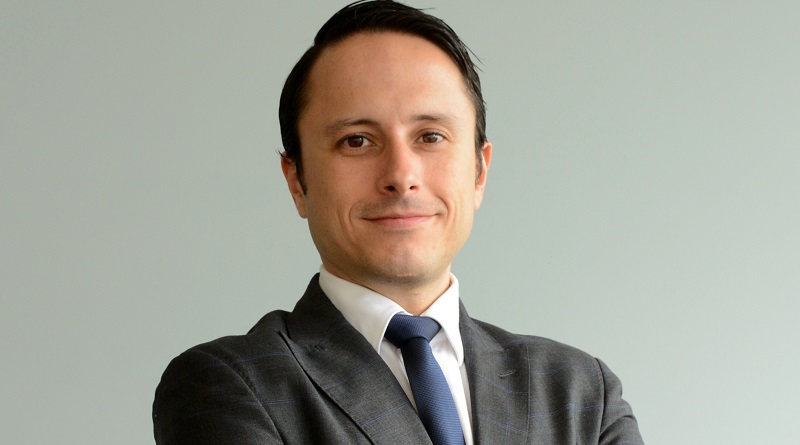Costa Rica – hardly any other country (except of New Zealand, Canada at times, and some Scandinavian countries perhaps) has managed to build such a favorable and strong reputation of a progressive, forward-thinking and sustainability-savvy nation, using strong symbolic actions and smart branding strategies to – over time – win over the hearts and minds of global audiences.
Daniel Valverde Bagnarello, Country Brand Director at Essential Costa Rica, in this interview tells the story of how they do it – and what’s next for Costa Rica.
Daniel, do you remember the first time you heard about country branding and reputation in connection with Costa Rica? What triggered your interest in the topic?
We marketers always keep our eye on the big things happening in our countries. In my case, my first approach to the Costa Rican country brand, curiously enough, was not while in Costa Rica, but when I was preparing a presentation during my studies in Spain. That’s when I discovered the advertising used to launch the brand. The subject intrigued me, so I researched it and it served me well in several courses during my master’s degree.
Before joining the Costa Rican country brand team, which is made up of professionals from different areas—marketing, advertising, public relations, foreign trade–my now boss, the president of the Country Brand, warned me of the challenge that was to come – the seemingly impossible task of managing “a brand whose ‘product’ can’t be controlled, in this case, the reputation of the country.”
Besides making me curious, it seemed like a great challenge for my career. I took the job and still love it!
As Country Brand Director at Essential COSTA RICA, in your view, what does “Brand Costa Rica” stand for today?
Costa Rica is not isolated from the world, nor from global challenges, especially the concern to cultivate people’s well-being, to achieve environmental stability in the face of the global threats of climate change, and to achieve sustainable economic development over time while protecting people and the environment.
Our country has proven to be visionary in those areas because in the last six decades it has made important decisions that have allowed it to build foundations to face these challenges and to become a global reference point, thanks to our socio-political model. We have the tools and platforms to fight social disparity, and fortunately the political will to do so also exists.
Today, the essence of this approach has materialized in our country brand strategy, which we call Essential COSTA RICA, referring to a small, concentrated country, full of a unique added value through its talented people.
How has the reputation of Costa Rica as 1) country of origin and 2) destination for leisure and MICE tourism changed over the last years?
Thanks to the development of our licensing protocol and its recognition within the platform of the ITC Sustainability Map, we are achieving exposure to a growing community of companies in goods and services sectors that have made a commitment to project their added value based on the policies of sustainability, social progress and innovation that Costa Rica offers the world.
This initiative is aligned with the development of the strategic plan of the country’s tourism, trade, industrial, private and public sectors to conquer international markets in order to create opportunities for commercial and tourism development.
Recently Costa Rica has developed a plan to create opportunities and to attract MICE tourism, a market that represents a great opportunity on a global level.
Essential Costa Rica was just awarded Best Place Brand of the Year at the City Nation Place Global Forum in London. What does this award mean for you?
Being nominated in four categories was already a victory for the Costa Rica country brand, but when they started describing the winning place brand during the event, talking about the admiration and respect felt for its trajectory, and then going on to naming it – it took us a minute to realize that Essential COSTA RICA was being awarded Place Brand of the Year and that we were expected to head to the stage!
We came back home proud of our country and of all the people, here and abroad, who believe in this great project, proudly stating that “we are Essential COSTA RICA”.
Which would you consider the main challenges or pitfalls to avoid, when promoting a country such as Costa Rica abroad?
Every country brand faces three main challenges: politics, funding and managing internal stakeholders.
The current strategy of Essential COSTA RICA, our country brand, addresses these potential risks well.
Today our main challenge is to create awareness. As a small country, in Costa Rica we don’t have high levels of production but instead we’ve become a country offering high added value. This means that we have to work twice as hard to have the correct storytelling reach our potential markets.
Tobias Grut in his interview illustrated how Nordic countries in Europe are working together across the region to be able to better reach audiences in emerging markets, especially Asia. Do you think this would be an example for Latin American countries to follow?
Six years ago, the directors of Latin American country brands agreed in Uruguay to seek joint opportunities to align messages in favor of the region’s reputation. Since then, this structure has been formalized such that during the City Nation Place Latin America and the Caribbean Conference in Costa Rica, this group of regional country brand managers agreed to create and formalize the Latin American Council of Country Brands, which we did at a special meeting in Honduras a few days ago. Through this network our countries will benefit by working on this narrative together.
Which are the challenges in a digital era, from a country branding point of view?
Since the global rise of social networks, communication with brands has become bilateral. People now seamlessly interact with contents that are shared and made viral quite fast and unexpectedly. Faced with this reality, those of us who work in the world of brand reputations have had to constantly reinvent our strategies.
In the case of Costa Rica, our approach has been to identify key audiences to share our content more effectively. To achieve this, inter-institutional alignment has been key to ensuring that the country’s various institutions coordinate their messages.
Apart from digitalisation, which other major trends are likely to influence the work of country and destination branding professionals in the years ahead?
- Decarbonisation of the economy
- Transparency
- Automated commerce based on experiences
- Rational consumerism
And: It is important that the teams leading country brands work closely with their stakeholders on the strategy and development of the different brands.
Securing adequate funding for place branding and marketing initiatives is often a challenge. What would a sustainable growth model look like for an organization such as PROCOMER, Costa Rica’s export promotion agency?
The governance of Essential COSTA RICA is composed of six institutions: the Costa Rican Foreign Trade Promotion Board (PROCOMER), the Costa Rican Tourism Bureau, the Ministry of Foreign Trade, the Costa Rican Coalition of Development Initiatives (which manages the country’s FDI attraction initiatives), the Ministry of Foreign Affairs, and the Ministry of Culture and Youth.
The responsibility for funding for the country brand strategy lies mainly with two institutions: PROCOMER and the Costa Rican Tourism Bureau.
The key to securing funding is directly linked to proving, year by year, the value Essential COSTA RICA has provided to tourism, foreign investment and export. It is therefore very important to include measurable strategies and tactics with clear country brand objectives in the operational plans of the relevant institutions.
Your key takeaways from the recent City Nation Place Forum Latin America, which took place in Costa Rica?
Despite the fact that the concept of country branding is not new, for our region it has been a challenge to consolidate the strategies of the different country brands.
These are the takeaways I got from the City Nation Place Latin America & Caribbean Conference:
- Sharing information among countries is critical to achieving a sound strategy. It doesn’t matter if one is located next to the other, or at opposite sides of the world.
- Latin America has great potential to develop. Therefore the conscious and well-orquestrated joint work of place marketers with place makers can bring great results to the region.
- Many of our country brands have a strong inclination to be a destination brand, instead of a comprehensive approach that includes trade and investment. The challenge remains to incorporate innovative trade elements to balance the comprehensive strategy of the country brand.
How do you collaborate with your citizens and businesses, to make sure their actions and stories align with Brand Costa Rica – and the other way around?
We have created a licensing protocol for the country’s business sector. This is based on 18 national and international standards, aligned with global trends, and recognized by the International Trade Center (ITC). This protocol is managed by five values that are highly appreciated by international audiences:
- Excellence
- Sustainability
- Innovation
- Social Progress
- Costa Rican Origin
We currently have almost 500 licensed companies. They have understood that the license, beyond the use of the logo, is a commitment to the added value that the country seeks to reflect globally.
With regard to citizens, we have adopted two approaches:
1) constant education of citizens about the key messages that we, as a country, position at the international level, and
2) citizen involvement by means of telling their stories of talent, entrepreneurship and innovation.
What’s next for Brand Costa Rica?
Continuing to seek opportunities for the nearly 500 licensed companies to have better ways to internationalize their products and services.
Continuing to work together with our local stakeholders, aligning the messages that the country must promote to create opportunities.
Continuing to work internationally on inbound digital strategies.
Thank you, Daniel.
Connect with Daniel Valverde Bagnarello on LinkedIn.
Enjoyed our interview with Daniel Valverde Bagnarello on the strategy behind award-winning country brand Essential Costa Rica? Thank you for sharing!


